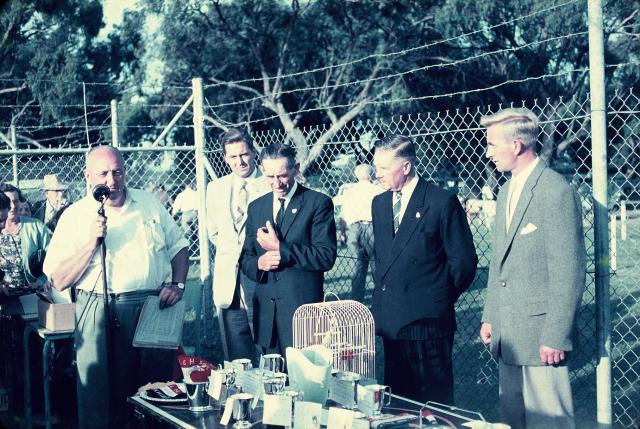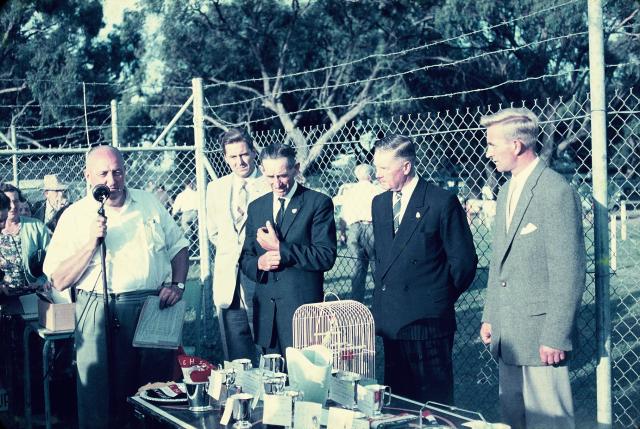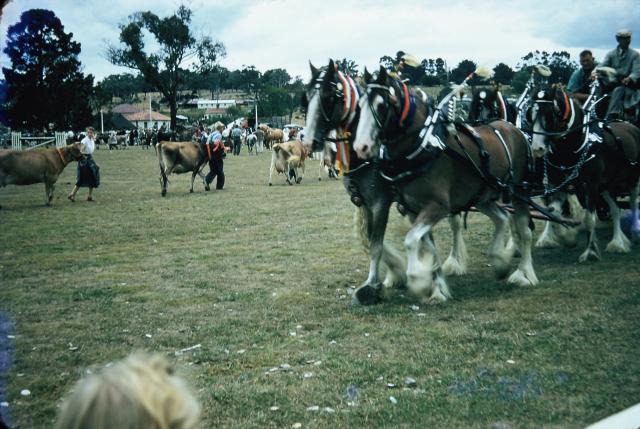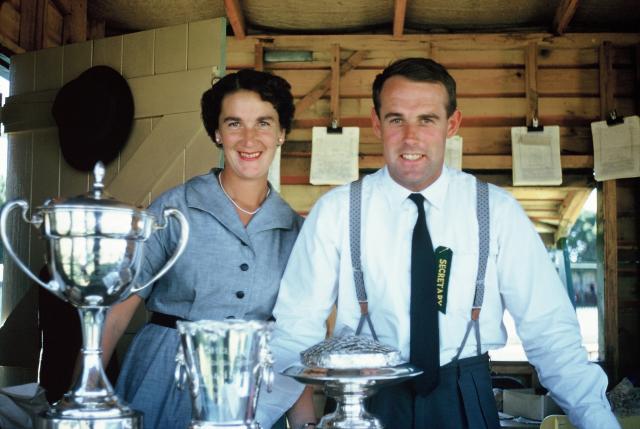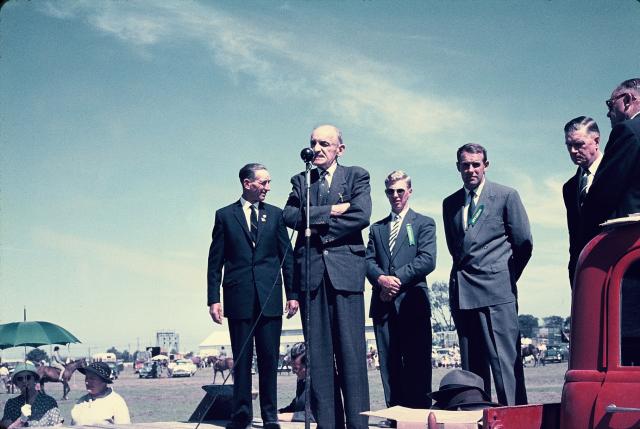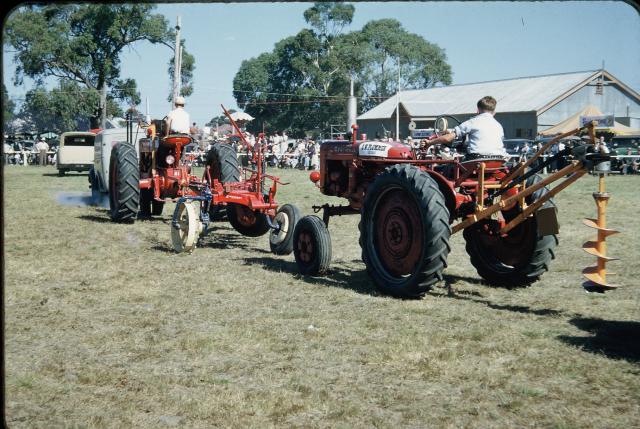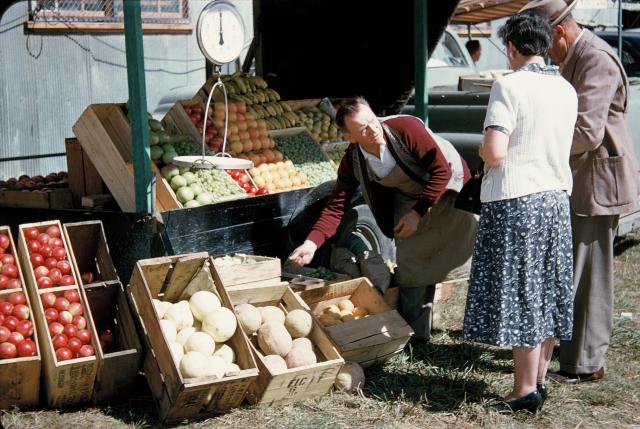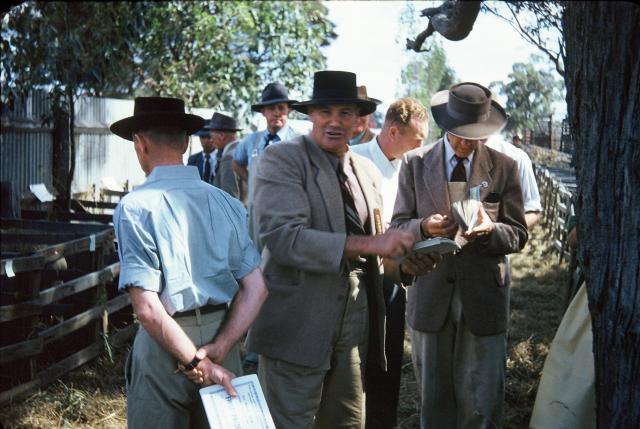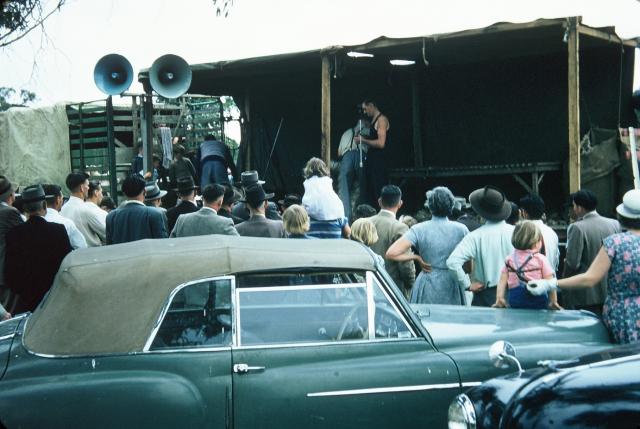
It’s been a long time since a CD-ROM was handed into the front desk at the Gazette office. With anticipation and a small crowd, the archaic technology was loaded into the computer to reveal a blast from the past, in colour, of the Pakenham Show from the 1950s and 1960s. With the 111th annual Pakenham Show just around the corner, Gazette reporter SHELBY BROOKS dived into the archives to learn more about what show day would have been like over half a century ago.
Kevin Cousin was about 20 years old when he used a then modern Pentax camera to document the Pakenham and District Agriculture and Horticulture Show during the late 1950s and early 1960s.
His parents owned an orchard on Ahern Road and the whole family was “keen show people“, friend Michael Bishop told the Gazette.
When they were younger, the two men were enthusiastic amateur photographers and both took photos around the district when they were both on the show committee.
Mr Bishop had been in possession of Mr Cousin’s photo slides after the latter moved to Orbost many years ago.
“I’m at the age where I’m trying to tie the loose ends up,“ Mr Bishop said.
Mr Bishop, who is now a life member of the Pakenham Show committee, had Mr Cousin’s slides digitised recently and were nice enough to share them with the Gazette.
In the collection, the photographs give a unique and coloured insight into the important agricultural event of the district.
The photos taken at what was the old football grounds (now P.B Ronald Reserve) are thought to be from the late 1950s.
It’s thought the show moved to what was then the Pakenham racecourse in 1962.
Back then, the show would draw a crowd of around 1000, Mr Bishop recalled.
“It was probably the only event in the district. The show was very important, there wasn’t much else,“ he said.
Men and women would dress in their finest clothes to attend show day and pack a picnic lunch.
Back then show did had very few sideshows or amusement rides.
“They just didn’t exist apart from the occasional merry-go-round,“ he said.
The toughest competition could be found in the exhibit pavilion between the fruit, vegetables and flowers, Mr Bishop said.
That could be blamed on the many fruit orchards in the district.
Although there were more orchards than cattle farms, the dairy sections of the show also showed stiff competition back then.
“Transporting animals in those days were difficult and a lot of effort was required to clean the animals up for showing so people would have to be very proud of their animals and think they could win in order to compete,“ Mr Bishop said.
“They didn’t win anything of consequence aside from a ribbon or a certificate.“
As a past agricultural science teacher, Mr Bishop also noted the change in cattle type seen over the years in the district.
“Initially the district was a jersey district, producing a lot of cream but eventually it went black and white (holstein friesian) to produce whole milk,“ he said.
“With friesians the herds were bigger so the number of farms in the district became less. Previously one man with 60 cows could make a living, now you have 600 cows in a herd.“
An iron man event and billy boiling competition were two competition sections not seen on the schedule these days.
Iron man competitors had to shift bales of hay, carry a bag of chaff to a wheelbarrow and heave over a fence in a race with substaintial prize money.
The competitors in the billy boiling competition were given wood, an axe, paper and a match and the first to get the billy boiling would win.
“We ran into a problem when someone sliced their finger open with the axe and an ambulance and doctor had to stitch it up- That disturbed the competition a bit,“ Mr Bishop laughed.


